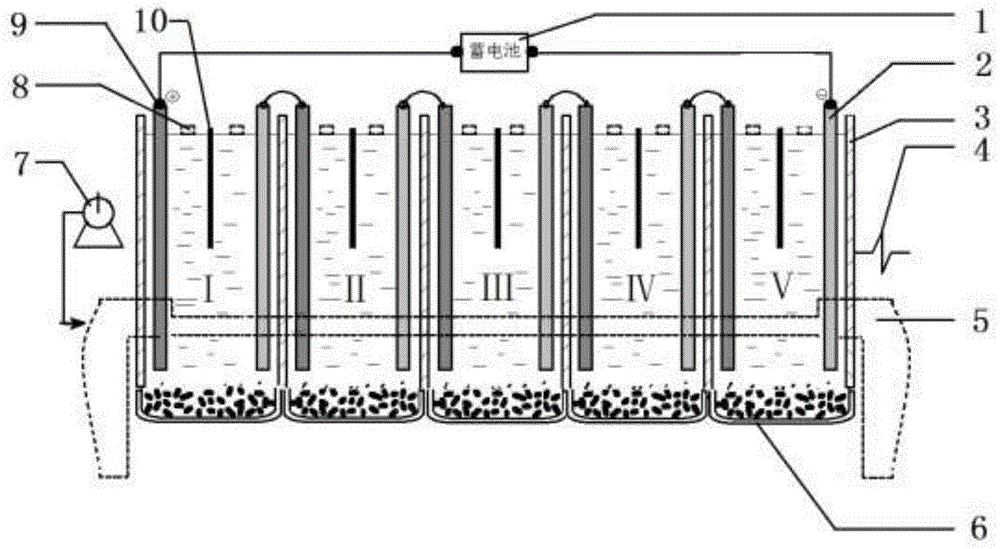Set for converting nitrogen and phosphorus in cultivation wastewater into magnesium ammonium phosphate on basis of seawater cell technology
A seawater battery and aquaculture wastewater technology, applied in the field of environmental pollution control, can solve the problems of the overall metabolic selectivity of the biological phase, the low proportion of effective microorganisms, the poor removal effect of soluble organic matter, and the low treatment load per unit volume, so as to alleviate the deterioration of water quality , Realize the utilization of waste resources and improve the effect of output voltage
- Summary
- Abstract
- Description
- Claims
- Application Information
AI Technical Summary
Problems solved by technology
Method used
Image
Examples
Embodiment 1
[0018] like figure 1 As shown, the device is equipped with a total of 5 working units including working unit I, working unit II, working unit III, working unit IV, and working unit V. Each working unit uses metal magnesium as the negative electrode of the seawater battery, and titanium as the positive electrode of the seawater battery. The negative pole of working unit I is connected to the positive pole of working unit II, the negative pole of working unit II is connected to the positive pole of working unit III, the negative pole of working unit III is connected to the positive pole of working unit IV, the negative pole of working unit IV is connected to the positive pole of working unit V, and the working The positive pole of unit I is connected to the negative pole of working unit V with a storage battery, and a drawer-shaped sediment collection box is provided on the lower surface of each working unit.
[0019] When in use, start the air pump (7) to inflate the airbag (5)...
Embodiment 2
[0023] The structure of the device is the same as in Example 1, except that graphite is used as the positive electrode of the seawater battery, and there are 7 working units in total. The mariculture wastewater injection device runs for 3.5 hours, and the pollution indicators before and after wastewater treatment are shown in Table 2.
[0024] Table 2: Concentration of various pollutants and output voltage data table before and after wastewater treatment
[0025]
PUM
 Login to View More
Login to View More Abstract
Description
Claims
Application Information
 Login to View More
Login to View More - R&D
- Intellectual Property
- Life Sciences
- Materials
- Tech Scout
- Unparalleled Data Quality
- Higher Quality Content
- 60% Fewer Hallucinations
Browse by: Latest US Patents, China's latest patents, Technical Efficacy Thesaurus, Application Domain, Technology Topic, Popular Technical Reports.
© 2025 PatSnap. All rights reserved.Legal|Privacy policy|Modern Slavery Act Transparency Statement|Sitemap|About US| Contact US: help@patsnap.com



